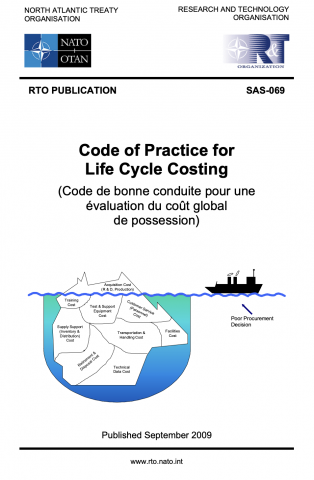Life cycle costing is the discipline or process of collecting, interpreting and analysing data and applying quantitative tools and techniques to predict the future resources that will be required in any life cycle stage of a system of interest.
The life cycle costs which are the output of this process include not only the costs of the acquisition but also other costs that are logically attributed to the programme throughout its life. The concept of “total ownership” or “whole life” cost is related but broader in scope. Detailed cost related definitions can be found in the NATO RTO SAS-028 report [1]. When used as a key measure, it can reflect differences in alternative procurement options and support solutions expressed in monetary terms.
Simply put, life cycle costing is a powerful technique that supports the analytical processes by which managers can make the most cost-effective decisions on options presented to them at differing life cycle stages and at different levels of the life cycle cost estimate. Note however that life cycle cost is just one of many criteria (e.g. operational need, government constraints) that could influence an investment decision.
Defines standard
Replaced/Superseded by document(s)
Cancelled by
Amended by
| File | MIME type | Size (KB) | Language | Download | |
|---|---|---|---|---|---|
| $$TR-SAS-069-ALL.pdf | application/pdf | 3.44 MB | English | DOWNLOAD! |

